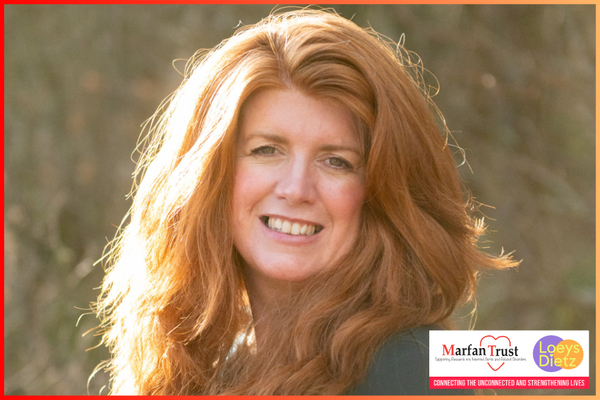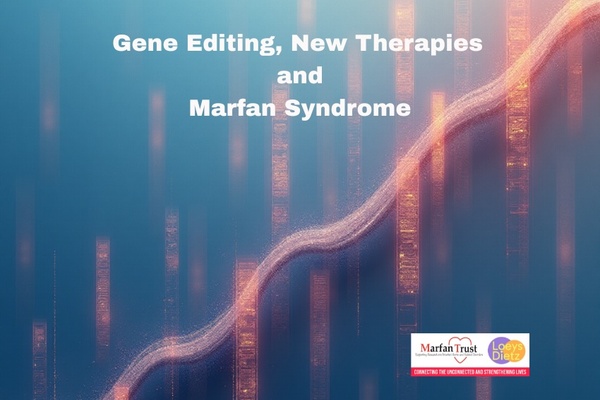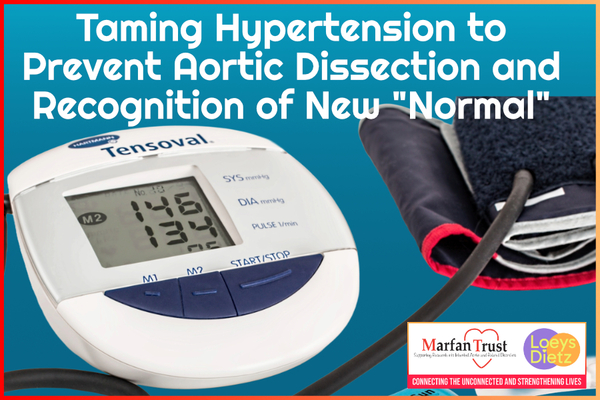Growing up under the shadow of Marfan syndrome, Natasha thought she was the only one of her siblings without the condition, until a genetic test proved otherwise. Later on, as she puts it, she "stumbled" into a career that helps patients and families just like hers. Meet Natasha, who will be delivering a series of webinars this summer!
by Natasha Woodgate
Growing Up with Marfan Syndrome
Marfan syndrome is something I’ve always been aware of throughout my life. My dad was first flagged as possibly having it when he was 16, but it wasn’t until just before I was born in 1977 that he received a formal diagnosis.
After I was born, my mum and dad went on to have two further children - my precious little brothers. From a very young age, we met with Dr Child up at the old St George’s Hospital Cardiac Unit, back when it was still housed in the old draughty Victorian buildings. She would line us up and measure our arm span and our height and listen to our heart with her stethoscope. It was all quite exciting as a child.
Growing up I was the child everyone thought didn’t have Marfan syndrome. I’m tall-ish (now 5 foot eight) but I didn't display any of the particularly obvious Marfan characteristics or signs - no scoliosis, no pigeon chest etc, no joint or vision problems and my heart appeared normal. One of my younger brothers was exceptionally tall, (he’s now 6‘ 5), and was having painful joints, and the other one had an issue with his eyes. it was always assumed they carried the Marfan gene and I most likely hadn't. Being the late 1980s/early 1990s diagnosis was only through clinical observations so we had no way of knowing.
My Father
In 1986, when I was 10 years old, my dad had a mitral heart valve replacement operation. This was in the very, very early days of this operation and it did not go to plan. After 5 years of poor health, he passed away when I was 14, whilst waiting for a heart transplant. I’ve spoken to Dr Child about this since in recent years, and thankfully, research has advanced so much that today, his condition could be managed with medication.
Genetic Testing - a Surprise!
A couple of years after his death, genetic testing became available. Back then, it involved taking a skin sample from the wrist and growing it in a Petri dish—very different from today’s methods. My brothers and I were tested, and we waited for the results. When they came in, the news shocked us all: I had tested positive for Marfan syndrome, while both my brothers were negative. It was a moment of massive surprise for my mum, who had always assumed the opposite based on our physical differences. Myself and my wider family (I also have an affected aunt, uncle and cousins) were actually the clinical subjects of a paper Dr Child wrote in the early 1990’s about Marfan syndrome - sadly my only claim to fame and quite a niche one at that!
I continued through the next decade or so with my bi-yearly Echocardiogram, thankfully all remaining stable.
Living with Marfan Syndrome: Strength, Awareness, and Adaptation
Because I’d always been told I was only mildly affected by Marfan syndrome, I carried on with life as normal. So, at 25 years old, when we moved into our new house and needed to remove a chimney breast, I found myself lifting wheelbarrows full of concrete—without a second thought! Not long after, I started experiencing palpitations and felt increasingly unwell, especially during exertion. I booked an appointment with Dr. Child and discovered I had rapidly dilated my aortic root. I was immediately put on beta blockers and advised to conceive within the next three years if I wanted children. Thankfully, the medication worked: my dilation reduced slightly, and needless to say, I no longer lift wheelbarrows full of concrete!
A Stable Decade – and Two Children
Despite the scare in my 20s, my Marfan symptoms have remained relatively stable through my 30s and 40s, even after having two children. Pregnancy checkups were always a source of mild amusement—consultants often seemed surprised, as I don’t present like a textbook case of Marfan syndrome. I like to joke that I tend to disappoint doctors! These days, I take Irbesartan, which works very well for me.
Movement, Mindfulness, and Yoga
I’ve learned to be cautious with physical activity. My past attempts at running led to foot injuries, and I avoid heavy lifting—my body’s simply too bendy for that kind of strain. Like many with Marfan syndrome, I’ve had a complicated relationship with exercise. It’s something I’ve never excelled at, likely because everything takes more effort with Marfan.
That said, over the past few years, I’ve discovered a real passion for yoga. It’s the perfect fit for me—my long limbs and flexible joints actually give me an advantage. While some poses are still a challenge, I’ve learned to listen to my body, adapt when needed, and avoid pushing myself too far. Yoga has kept me strong and largely pain-free, and I enjoy it so much that I’m about to start yoga teacher training. It’s great for both body and mind, and I truly recommend it to anyone—Marfan or not.
Finding My Calling in Occupational Therapy
I stumbled into Occupational Therapy at 18, starting out as an OT assistant and quickly realising I had a genuine passion for the field, which led me to pursue a degree in the subject and qualify as an Occupational Therapist.
It was during my studies that I began to connect the dots between my own experiences and Marfan syndrome. Difficulties I had in school, like inconsistent handwriting that began the day as very presentable but deteriorated to become illegible by the day’s end because my hand was crampted and in pain. Or the fact I found sitting on the school chairs so very uncomfortable verging on painful that I shifted my position constantly to get relief. I’d often end the day physically exhausted and aching all over. At the time, I didn’t recognise these as issues, but looking back, they were clear signs of how Marfan was affecting me. With the right support, many of these challenges could have been managed or avoided.
Sharing My Story, Supporting Others and Volunteering for the Marfan Trust!
Having my own children has given me a deeper recognition of the struggles faced by young people living with Marfan syndrome. I’ve worked closely with the schools they’ve attended to help implement school healthcare plans and make the necessary adjustments to support their learning and well-being. My role as an Occupational Therapist has placed me in the privileged position of truly understanding how to navigate these systems—and I’m very keen to share this knowledge, and my personal and professional epxerience, with other Marfan parents navigating similar experiences.
Throughout my career, I’ve also worked extensively with adults living with a range of conditions and disabilities. My goal has always been to help people live as independently and comfortably as possible through tailored strategies, tools, and adjustments.
This is why I chose to volunteer with the Marfan Trust. It’s obviously a cause very close to my heart and I have seen repeatedly how adjustments, strategies and equipment can make vast positive changes in people’s lives (have I mentioned I love my job!).
I am excited that the Marfan Trust have asked me to run some free webinars for them where I can share this experience. We are starting with a school/child based session but are looking at doing an adult focused session very soon. I look forward to meeting some of you virtually very soon.









